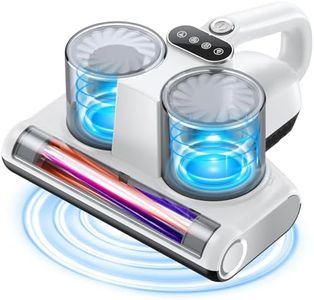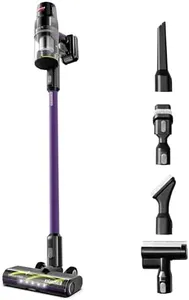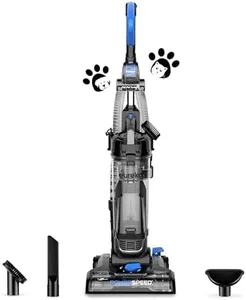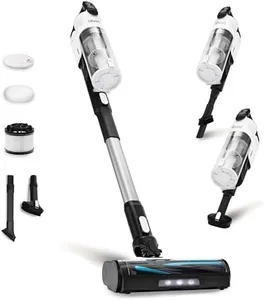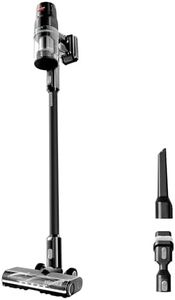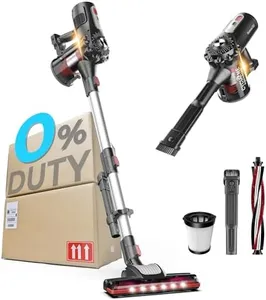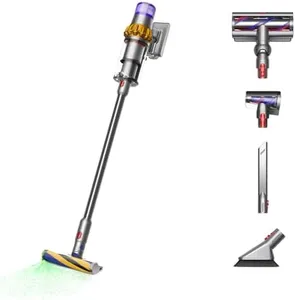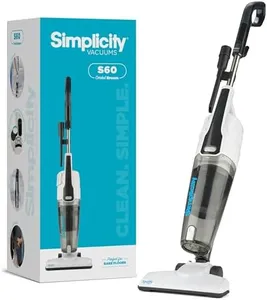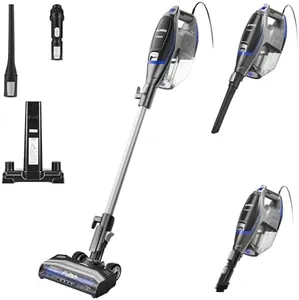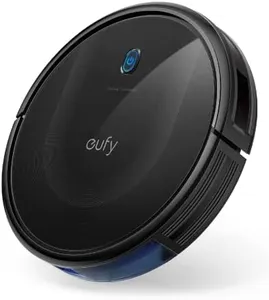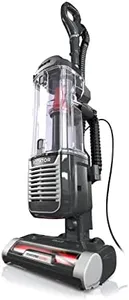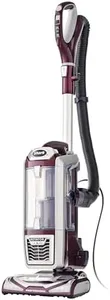10 Best Vacuum Cleaners 2025 in the United States
Our technology thoroughly searches through the online shopping world, reviewing hundreds of sites. We then process and analyze this information, updating in real-time to bring you the latest top-rated products. This way, you always get the best and most current options available.

Our Top Picks
Winner
Bissell Cleanview XR Pet 300W Cordless Vacuum with Removable Battery, 3797V
Most important from
107587 reviews
The Bissell Cleanview XR Pet 300W is a versatile cordless vacuum designed especially for pet owners. Its highlight is a powerful motor that offers 60% more suction power compared to some competitors, like the Shark IX141, making it effective for picking up pet hair and debris. With a runtime of up to 40 minutes, it allows for ample cleaning sessions without the hassle of being tethered to a power outlet, which adds to its convenience and maneuverability.
Weighing just 5.9 pounds, this vacuum is lightweight and easy to handle, making it suitable for users needing to clean various surfaces, from carpets to hard floors, and even furniture and cars. The inclusion of useful attachments such as a deep cleaning fur brush, dusting brush, and crevice tool enhances its functionality, allowing users to tackle different cleaning tasks effectively.
There are some drawbacks to consider. The filtration system is a foam filter, which, while simple, may not be as efficient at trapping allergens compared to HEPA filters found in other models. Additionally, the vacuum's dust capacity is on the smaller side (0.3 liters), meaning it may require more frequent emptying, especially in homes with multiple pets. This vacuum is designed for indoor use, and it is not suitable for outdoor cleaning tasks.
Most important from
107587 reviews
Shark NV352 Navigator Lift Away Upright Vacuum, Hepa Filter, Anti-Allergen Technology, Swivel Steering, Ideal for Carpet, Stairs, & Bare Floors, with Wide Upholstery & Crevice Tools, Lavender
Most important from
111877 reviews
The Shark NV352 Navigator Lift Away Upright Vacuum is a versatile and lightweight vacuum cleaner that excels in various cleaning tasks. Its Lift-Away functionality allows users to detach the pod to clean hard-to-reach areas such as stairs and furniture. This vacuum is equipped with Anti-Allergen Complete Seal Technology that works alongside a HEPA filter, ensuring that dust and allergens are trapped inside, making it an excellent choice for allergy sufferers.
The vacuum’s powerful suction is effective on both carpets and bare floors, and the brushroll shutoff feature offers smooth transitions between different floor types. With swivel steering, it’s easy to maneuver around tight spaces and furniture, and it also includes attachments like a wide upholstery tool and crevice tool for versatile cleaning. Weighing 12.5 pounds, it balances power and portability well.
However, at 80 dB, it might be noisier than some users prefer, and as a corded vacuum, it lacks the convenience of cordless models. Despite requiring assembly, its ease of use and the 5-year limited warranty add to its appeal. This vacuum is especially suitable for pet owners and those with allergies, looking for a dependable all-around cleaning tool.
Most important from
111877 reviews
Eureka PowerSpeed Bagless Upright Vacuum Cleaner, Pet Turbo, Black
Most important from
59417 reviews
The Eureka PowerSpeed Bagless Upright Vacuum Cleaner, Pet Turbo, is a lightweight and portable vacuum, weighing just 10 pounds, making it easy to maneuver around your home. Its powerful suction is suitable for both hard floors and deep carpets, thanks to its 5 height adjustment settings. This feature makes it adaptable, providing a thorough clean on various surfaces.
The extra-large 2.6-liter dust cup is another strong point, as it reduces the frequency of emptying, allowing for more uninterrupted cleaning sessions. This vacuum is especially great for pet owners, as it includes a pet turbo tool, crevice tool, dusting brush, and upholstery tool, all conveniently stored on board for easy access.
Maintenance is made simple with its washable filters and bagless design, eliminating the need for replacement bags and filters, which saves on ongoing costs. However, there are a few drawbacks. At 88 dB, the noise level is relatively high, which might be disruptive for some users. Additionally, it is not cordless, which could limit its portability in larger homes or spaces without ample power outlets. The hose length is also quite short at 2.1 feet, potentially restricting its use in reaching higher or farther areas. Despite these limitations, the Eureka PowerSpeed offers solid value for those looking for a powerful, versatile, and cost-effective vacuum cleaner, especially if they have pets.
Most important from
59417 reviews
Buying Guide for the Best Vacuum Cleaners
Choosing the right vacuum cleaner can make a significant difference in maintaining a clean and healthy home. The best vacuum cleaner for you will depend on your specific needs, such as the type of flooring you have, whether you have pets, and any allergies or sensitivities to dust. Understanding the key specifications will help you make an informed decision and ensure you get a vacuum cleaner that meets your requirements.FAQ
Most Popular Categories Right Now
